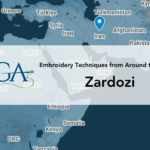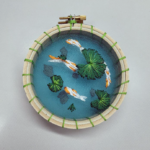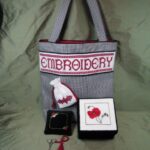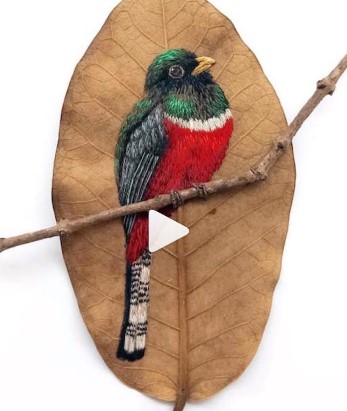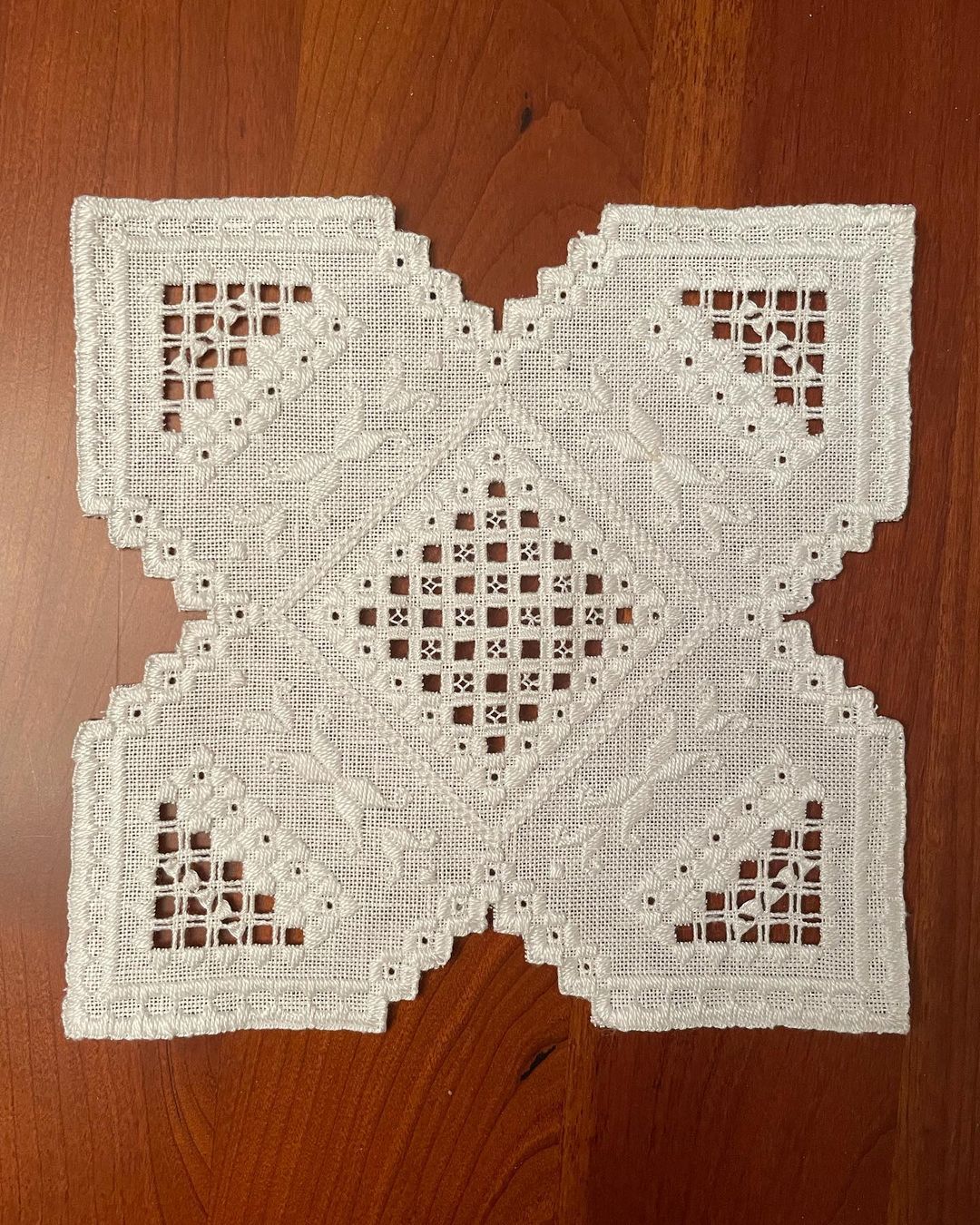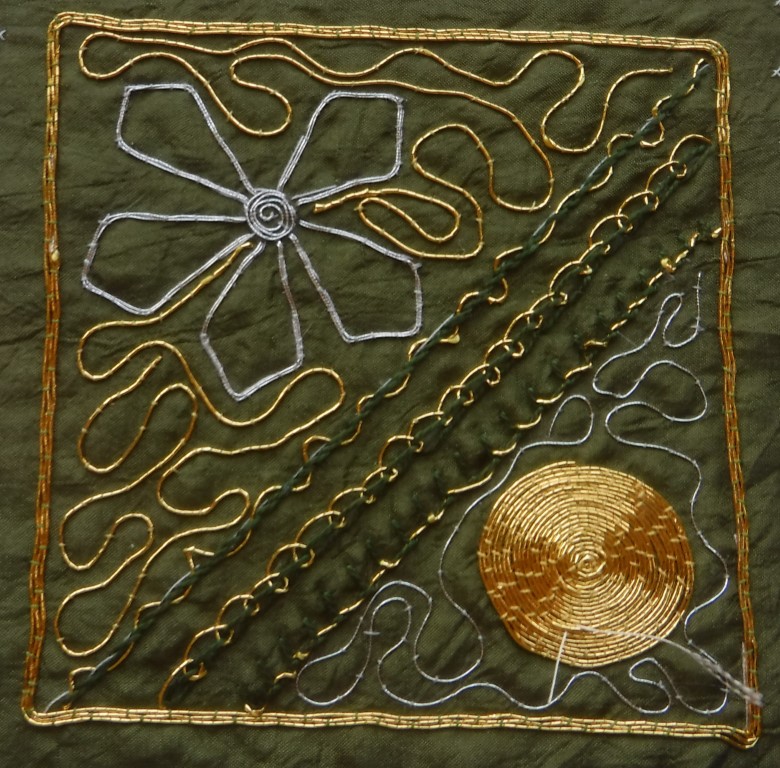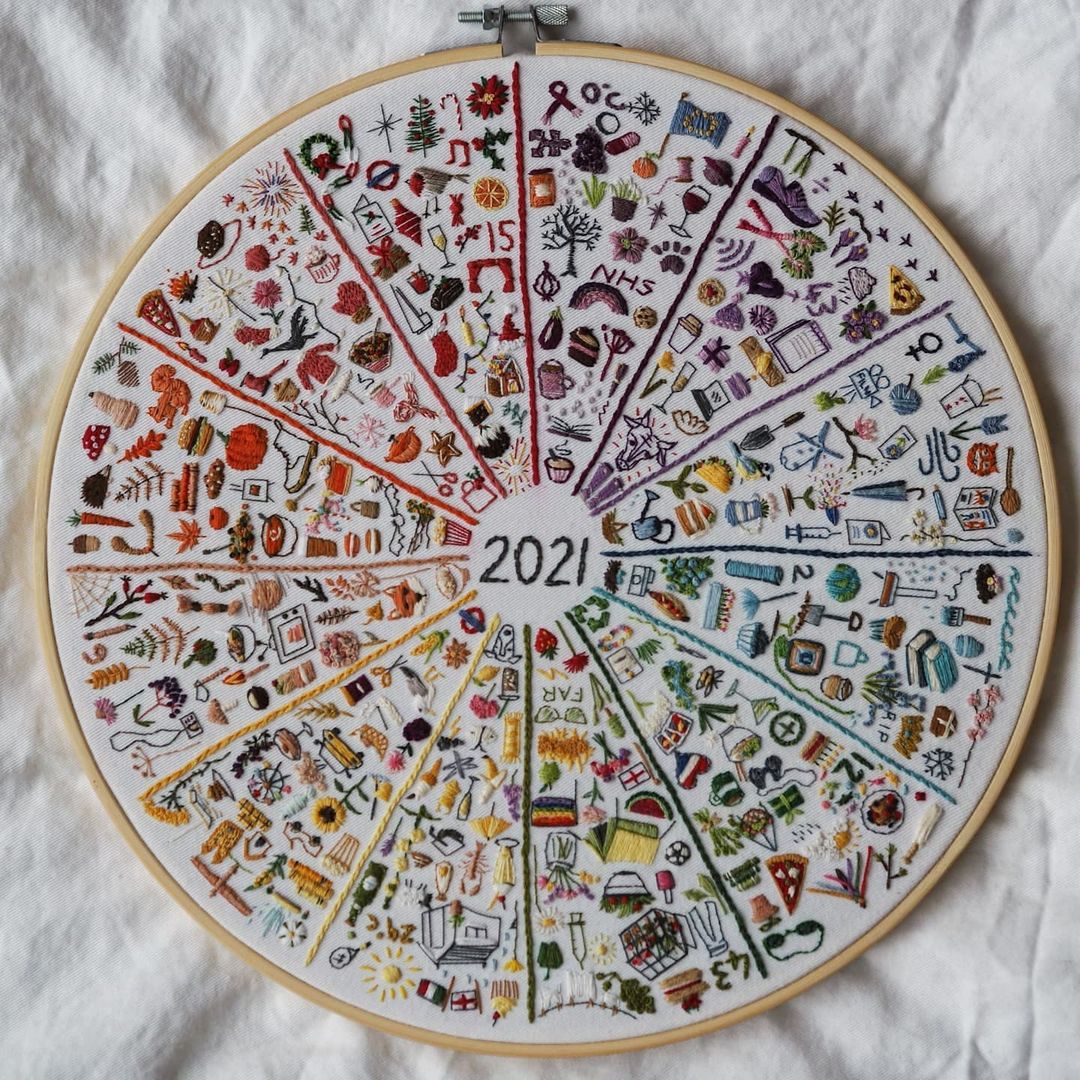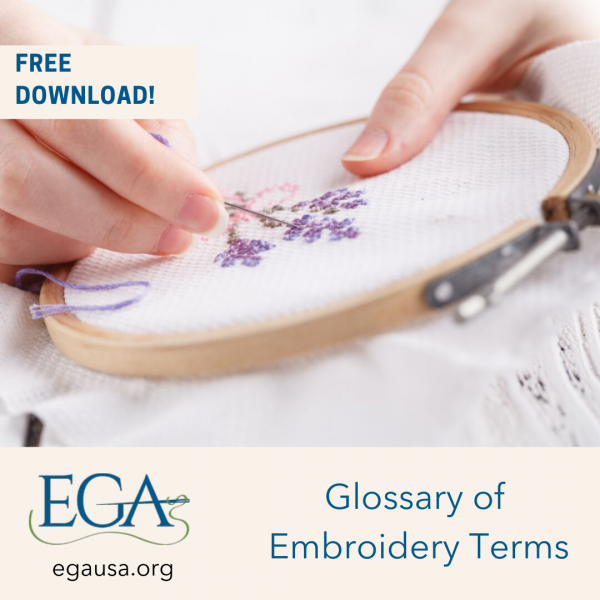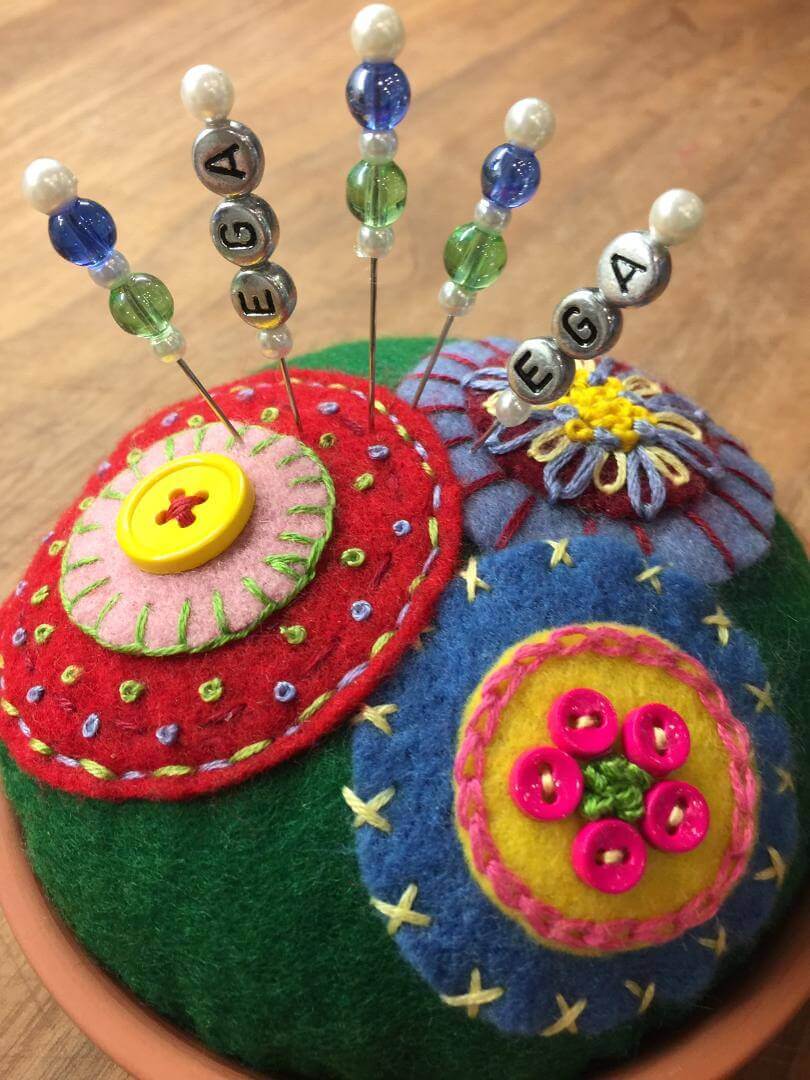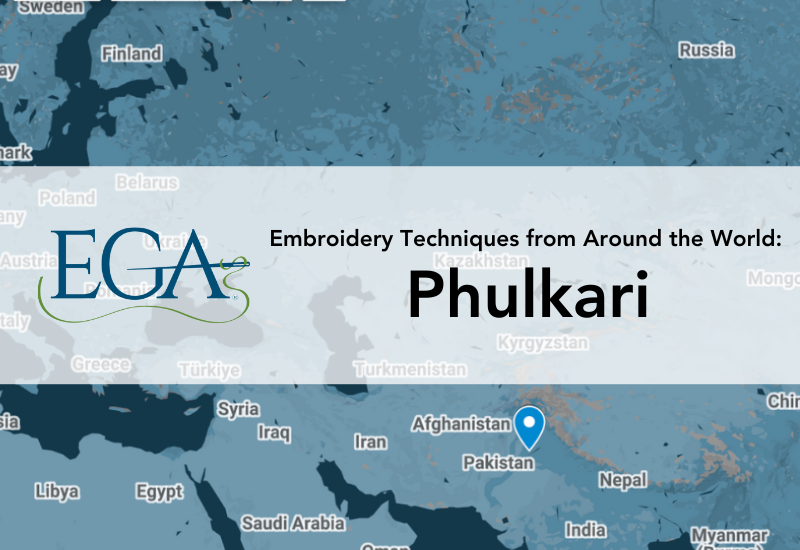
Technique: Phulkari
Place of Origin: Punjab region of South Asia
Earliest known date: 15th century
History: Phulkari’s origins are difficult to pinpoint. Some historians believe the style was popular as long ago as the 7th century. In the 7th century biography of the Indian emperor Harshavardhana, it states that “some people were embroidering flowers and leaves on the cloth from the reverse side,” which describes the process of stitching Phulkari embroidery. However, the earliest records of Phulkari embroidery trace back to the 15th century in the Punjab region of South Asia, which was divided between Pakistan and India during partition.

Phulkari literally translates to “flower work” (phul = flower, kari = work). Phulkari was an essential part of Punjabi culture. Phulkari techniques were handed down generation to generation, with toung girls learning from their mothers and grandmothers, often starting at an early age and creating textiles throughout their youth. Phulkari embroideries featured in items used in daily life as well as to celebrate milestone events such as weddings, religious festivals, and births. Phulkari embroidery is usually worked on dupattas (shawls), scarves, bed and table linens, veils, pillows, and more. Many pieces of Phulkari would later become pieces in a woman’s dowry that she would bring to her new husband’s home.

Materials: Traditional Phulkari embroidery is worked on “khaddar,” a coarse, handspun cotton that was commonly available in rural households. Today, you will also find Phulkari stitched on muslin, georgette, or even chiffon.
The threads used in Phulkari are typically unplied silk floss called “pat.” Sourced from China, Bengal, or Afghanistan, this silk was prized for its sheen and intensity. The colors hold symbolic meaning: red for joy and celebration, white for purity, and yellow or orange for spirituality. Natural vegetable dyes were initially used to color the threads and fabrics, though synthetic dyes are now more common due to availability and cost.
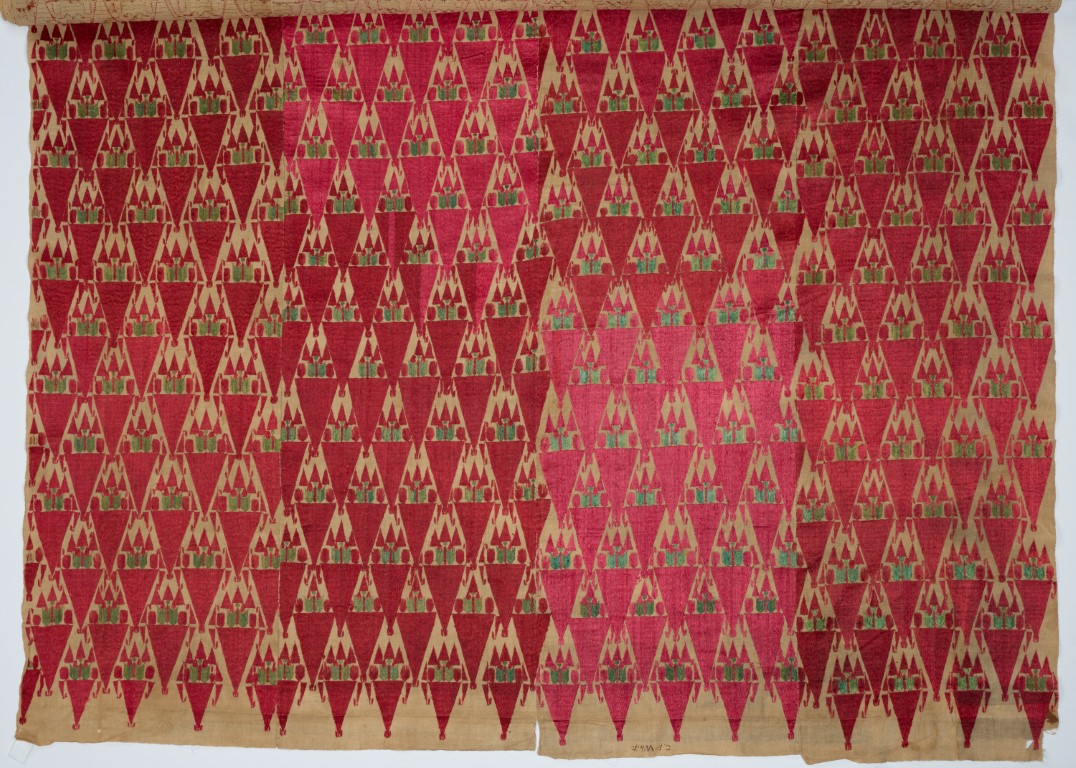
Techniques & Stitches: Phulkari is a type of counted thread embroidery, with stitches meticulously calculated based on the weave of the fabric. While Phulkari features several different surface embroidery stitches, the primary stitch used is the darning stitch, both long and short, and executed on the reverse side of the fabric so that the design reveals itself on the front.
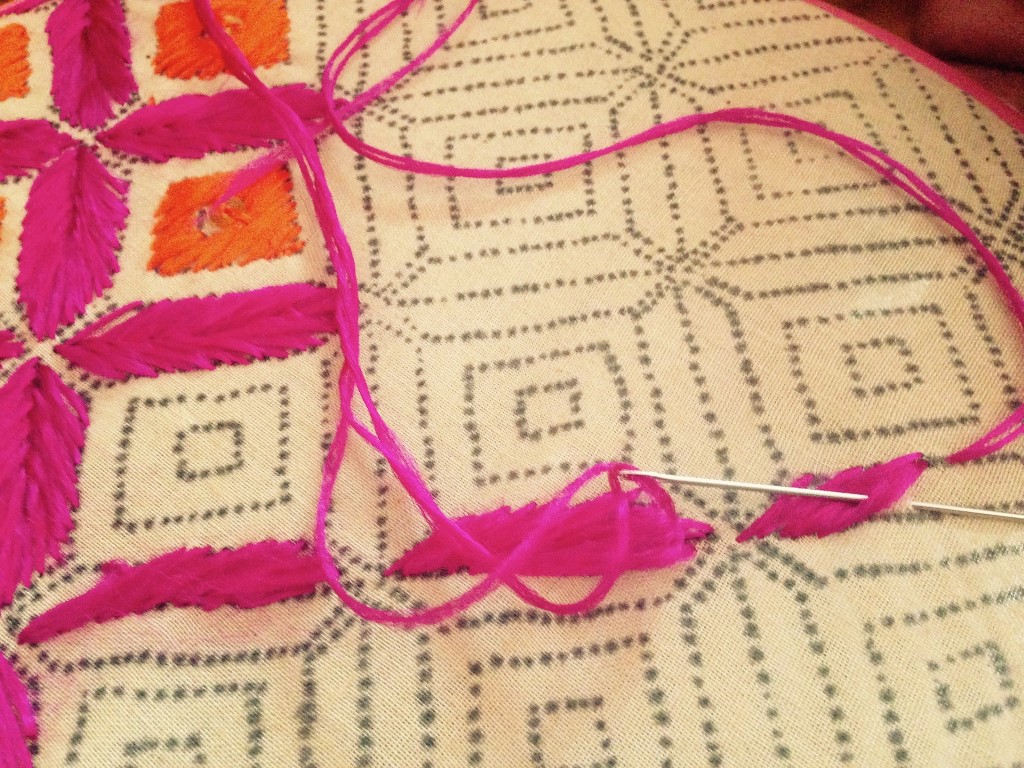
Other Phulkari stitches include running stitch, used for outlining; herringbone stitch; featured in certain regional variations; Holbein stitch, sometimes used for adding detailing; and satin stitch, mostly seen in modern reinterpretations.
Phulkari’s array of stitches focus on rhythmic repetition, symmetry, shading, usually with just one or two stitch types. As mentioned above, with darning stitch, stitchers begin on the wrong side of the fabric, using horizontal, vertical, and diagonal darning stitches that form geometric patterns. The artisan must count and visualize the pattern backward—a process that demands concentration and patience.
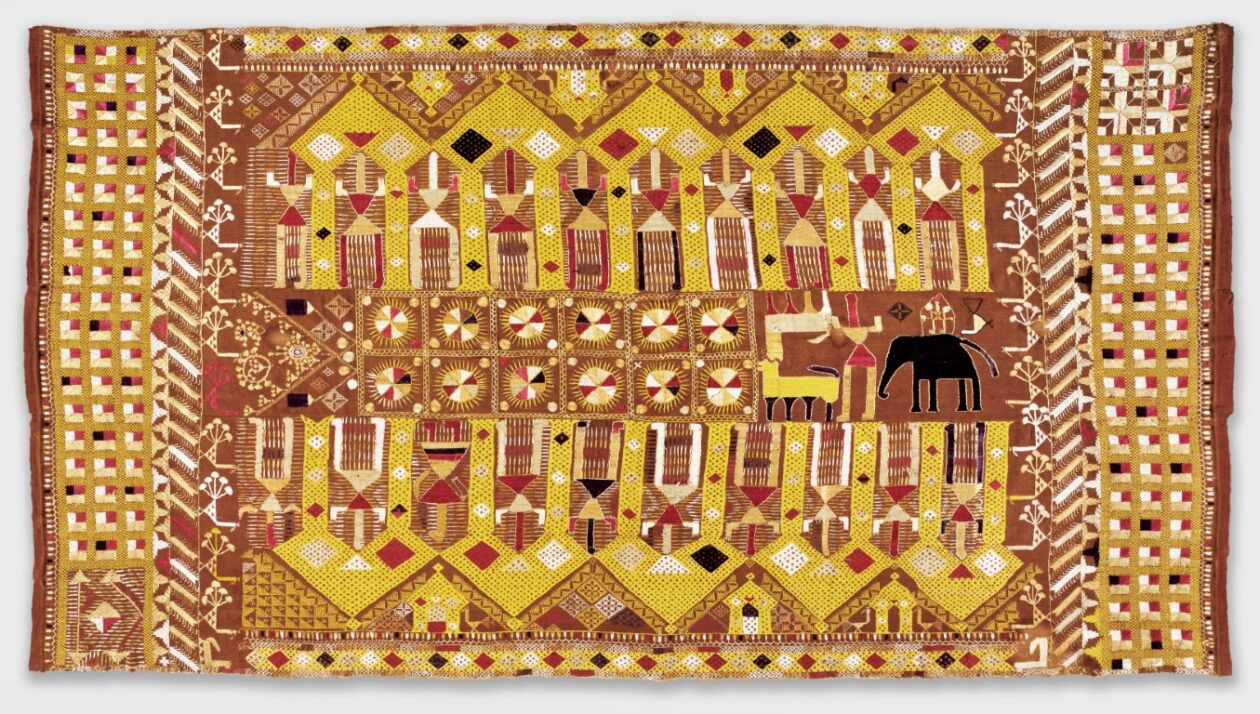
Most Phulkaris are created without tracing or drawing the design beforehand. The motifs emerge from memory, intuition, and years of practice.
Motifs: Phulkari motifs are more than decorative—they’re deeply symbolic and often inspired by daily life, nature, and religious beliefs. Common motifs include:
- Flowers and plants: True to its name, floral designs dominate, representing beauty, prosperity, and femininity.
- Geometric patterns: Squares, triangles, and diamonds
- Animals and birds: Peacocks, elephants, and sparrows
- Celestial elements: Suns, stars, and stylized interpretations of the universe
- Objects of daily life: Spindles, jewelry, and even agricultural tools appear in Sainchi Phulkari, a style known for its narrative detail.
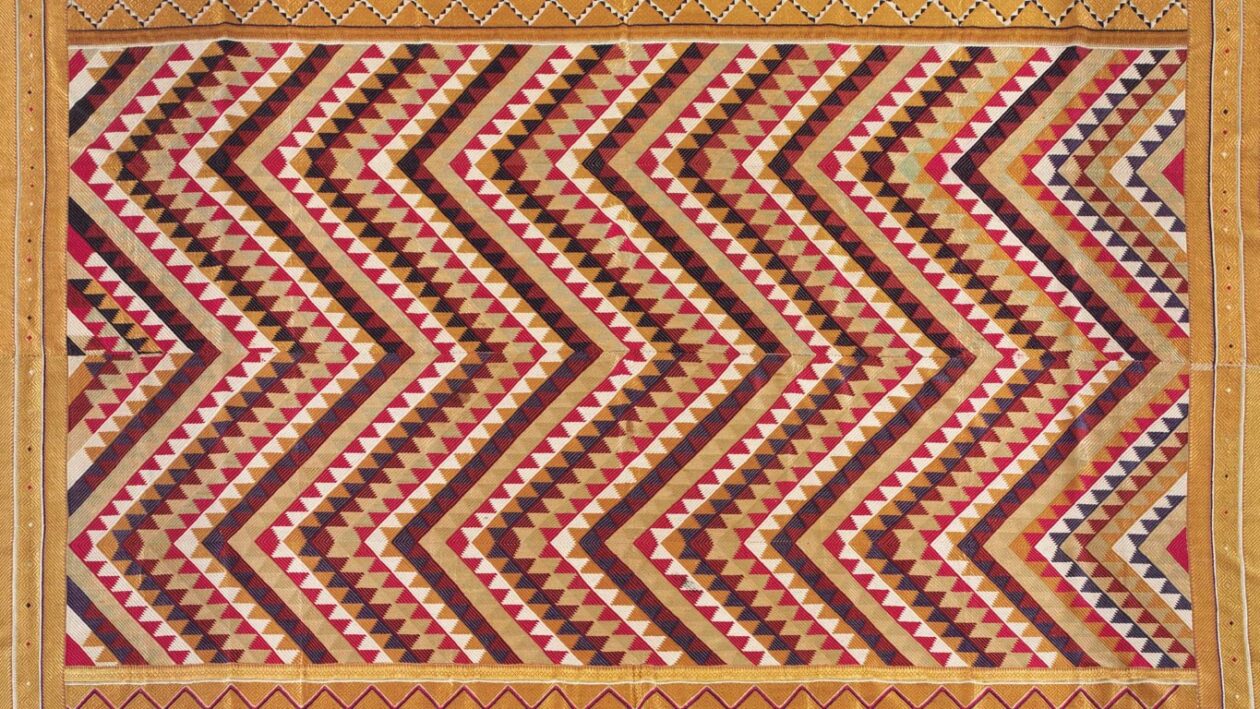
Different types of Phulkari were stitched for different events and purposes. Some styles include: “Bagh” Phulkari, where stitch patterns completely cover the cloth; “Vari-da-bagh” Phulkari embroidery, stitched with golden thread on red cloth; “Chope” Phulkari, stitched by maternal grandmothers for the birth of their granddaughters; “Suber” Phulkari, worn by brides during marriage rituals; and “Darshan dwar” Phulkari, stitched for offerings. At one point, there were more than 50 different types of Phulkari in existence, although at present there are likely about a dozen in use.
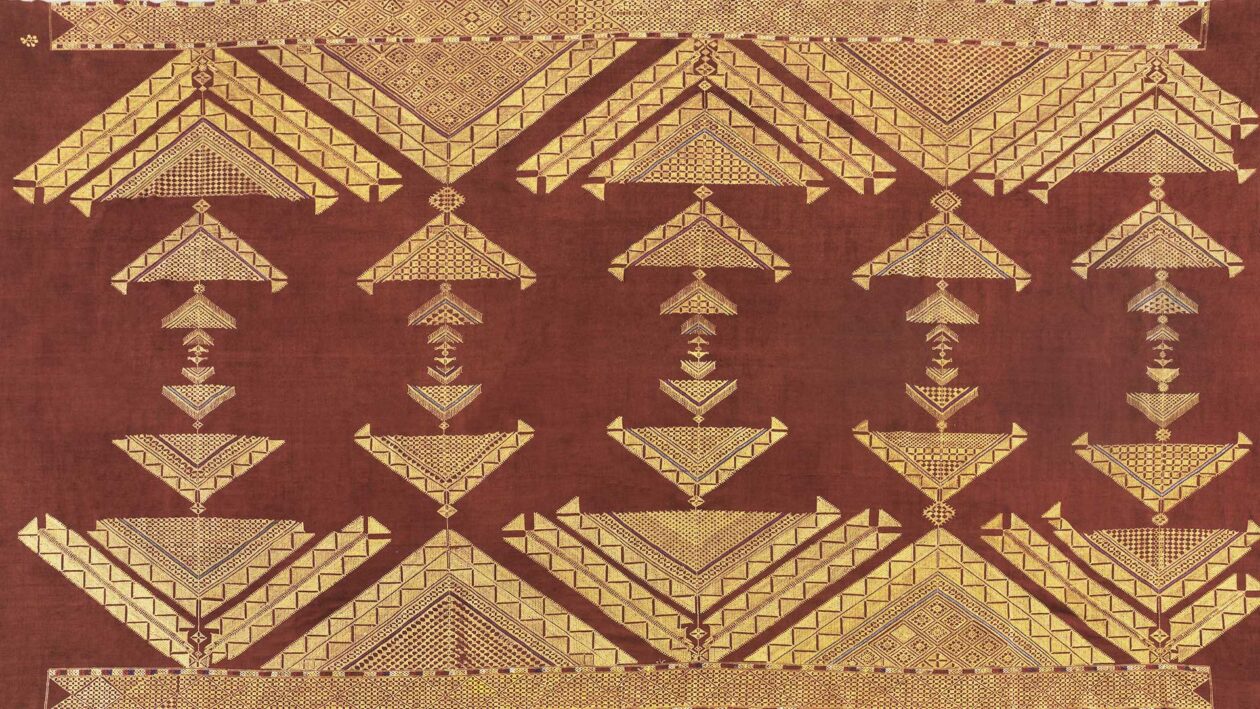
Stitchers interested in South Asian embroidery can see examples of styles like Phulkari in the online Asian Fusion needlework exhibition.

Sources
Phulkari. In Wikipedia. https://en.wikipedia.org/wiki/Phulkari
(2022, April 21). Phulkari. MAPACADEMY. https://mapacademy.io/article/phulkari/
(2022, September 11). Phulkari – The dyeing embroidery of Punjab. Khinkhwab. https://khinkhwab.com/en-us/blogs/news/phulkari-the-dyeing-embroidery-of-punjab
(n.d.). Phulkari. Philadelphia Museum of Art. https://philamuseum.org/collection/curated/phulkari
(n.d.). The Garden of Love and Labour. Jai-Pur. https://www.jai-pur.com/journal_entry/princess-niloufer-breaking-boundaries-between-east-and-west/
(n.d.). An Interwoven History: Phulkari and Punjab. The Heritage Lab. https://www.theheritagelab.in/phulkari-punjab/
(n.d.). Phulkari Embroidery – The Traditional Fabric Art of Punjab. Caleidoscope. https://www.caleidoscope.in/art-culture/phulkari-embroidery-punjab
(n.d.). When the Women of Punjab Embroidered Trains on Phulkari Cloth. Brown History. https://brownhistory.substack.com/p/when-the-women-of-punjab-embroidered
(2023, May 29). Unveiling the Beauty of Phulkari: A Tapestry of Tradition and Artistry. For Sarees. https://www.forsarees.com/blogs/weave-a-story/unveiling-the-beauty-of-phulkari-a-tapestry-of-tradition-and-artistry

